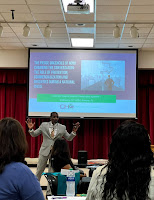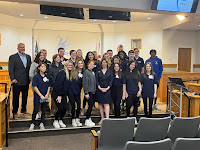In honor of National Drug and Alcohol Facts Week, InnerAct Alliance is happy to partner with the National Institute on Drug Abuse (NIDA) and the National Institute on Alcohol Abuse and Alcoholism (NIAAA) to share some quick science-based facts about alcohol, drugs, and addiction. We believe that knowledge can empower youth to make more informed decisions and adopt healthy behaviors that will enhance their mental health and well-being. Today the focus is on ALCOHOL.
Alcohol is a drug that slows down or depresses the brain. Like many drugs, alcohol changes a person's ability to think, speak, and see things as they really are. As the brain keeps developing into the mid-twenties, drinking alcohol as a teen can greatly increase the risk of damage to the developing brain. The safest level of alcohol drinking for young people is not drinking at all.
Alcohol and Binge Drinking (drinking heavily over a short time with intention of becoming drunk) can lead to young people taking risks and putting themselves in dangerous situations that increase the risk of alcohol-related harm, injury, or even death:
* Common side effects of alcohol use are hangovers, headaches, nausea, vomiting, and shakiness
* Car accidents and drunk driving are the leading causes of death for young adults between ages 18-25. According to SAMHSA, underage drinking contributes to more than 4,300 deaths among those below age 21 in the U.S. each year. Drinking under age 21 is also strongly linked with death from alcohol poisoning
* Alcohol impairs judgement so youth under the influence of alcohol or other drugs are more likely to engage in unsafe sexual practices that may lead to sexually-transmitted infections (STIs) or pregnancy
* Unintentional injuries such as falls, drowning, burns, and firearm injuries, plus increased violence that may result in homicide and/or suicide
* Long-term chronic diseases such as liver cirrhosis; pancreatitis; cancer (liver, mouth, throat, larynx, esophagus); high blood pressure; and psychological disorders
* Although Alcohol is the most commonly-used substance by teens, most teens do not drink. Teen alcohol use continues to drop each year - in 2019. rates of past-year alcohol use by students in grades 10-12 were at a 5-year low
Studies show the most influential role models for young people are their parents and caregivers. While you may not be able to prevent young people from experimenting with alcohol, you can talk with your children to inform, encourage, and model sensible drinking habits. Be sure to remind them of the law - the minimum legal drinking age in the U.S. is 21 years old.

































